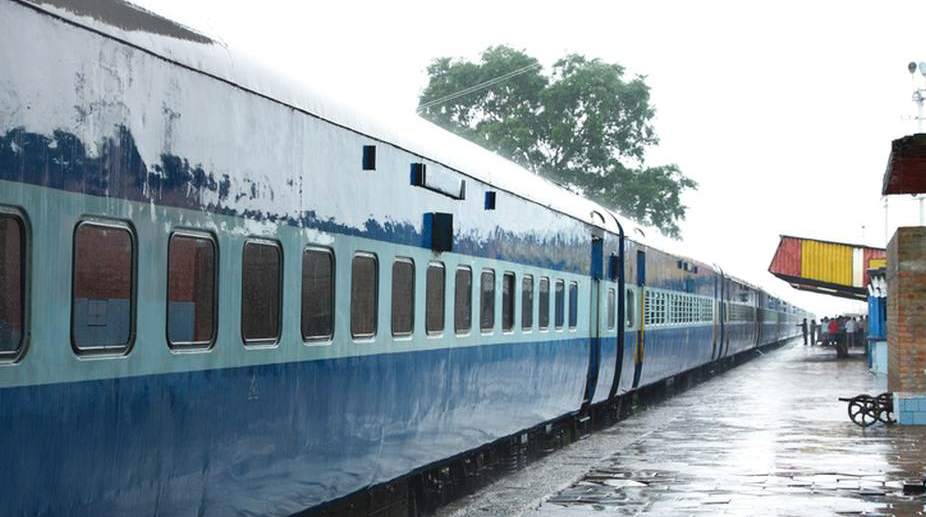After every rail accident it is usual to act out a charade – transfer, suspension, sending on leave, not sparing the guilty, awaiting Commissioner of Rail Safety enquiry report, monetary compensations etc.
The recent accidents are no exceptions. No wonder that accidents continue to plague the railway. Real causes are often not established or kept vague. The “enquiry reports” gather dust and recommendations are perfunctorily dealt with.
Next to the Indian Army, the Indian Railways may be the most disciplined force in the country. Like infantry, armoured, engineers, signals, defence accounts, etc.
In the army, railways also have well defined functional disciplines like civil, mechanical, electrical, electronic/signal, operations, commercial, finance, stores, medical, security etc. The “art and science” of management plays an important role in both employing more than a million men each, located at far flung and obscure places.
Over more than 150 years of operating experience, IR has developed well-oiled management machinery with Railway Board (Central Command), zonal, divisional and field levels.
Technical/operational knowledge, experience, skill, discipline, man-management and dedication are considered vital. Camaraderie amongst railway men extends even beyond national boundaries. Attempts at restructuring the railways by committees with scant knowledge of “rail operation”, organisation and technology are not only counter-productive but can irreversibly destroy the system.
In a lighter vein, it is said that “committees” are constituted with a view to procrastinate. Committees, at best, play an “advisory” rule and are not made responsible for implementation or end results. It is, however, admitted that railways do currently need assistance of “specialised consultative agencies” in specific areas, particularly, in finance, commercial, marketing and provisioning of additional funds without getting into a “debt trap”.
It, however, devolves on the Railway Management to take full responsibility for strategic planning, technology upgradation and operation, for which it is eminently qualified. Railway procedures are systematically codified in operating manuals, general and subsidiary rules, separate codes for civil, electrical, mechanical, signal, accounts, stores, establishment etc.
New railway lines or additional passenger trains can be sanctioned only after due process of “traffic/commercial survey”. The number of trains, passenger and freight, that can be permitted in a particular section depending on the “Section Capacity” is mathematically and scientifically calculated based on the length of the block section, speed of trains, signaling, allowances for maintenance of track/rolling stock, control system, recovery time etc.
“Master charts” are graphically plotted to lay down the path of every train. Running of trains beyond the “sectional capacity”, as is the case in most of the “trunk routes”, drives the whole system out of gear and is a “sure recipe” for deterioration in rail operation and safety.
Political masters often give orders for additional trains/new rail lines keeping an eye on the vote bank. Railway administration, however, bears the responsibility of presenting the justification or otherwise in writing to the concerned political bosses for taking appropriate decision. Unfortunately, the concept of a “committed bureaucracy” has also permeated in the railway administration.
A technology-based “dynamic operating system” like the railways cannot brook such interference without jeopardising efficiency and safety. It is interesting to note that “passenger punctuality”, apart from being an important index of efficiency, is a good indicator of safety.
Train punctuality is “measurable” on a real time basis and therefore “manageable”. It depends on adequacy of section capacity, design and maintenance of track, rolling stock, signalling, communication and control system.
These factors also directly affect the safety of operation. Today, the punctuality of a passenger train has gone “hay-wire”. Consequently safety is jeopardised. Many rail accidents are attributed to human failure. Rail operation is field-oriented and labour intensive.
Skilling of railway staff by way of judicious mix of “theory and practice” is considered essential. Railways had excellent “apprentice schemes” in all disciplines; these have been discontinued. “Lifelong learning” throughout a railway career, in order to keep abreast of rapidly changing technology, is necessary.
The recent decision taken to discontinue the recruitment of “Special Class of Rly Apprentice” at a young age through UPSC, imparting intensive theoretical and practical training in “rolling stock engineering” and passing out after obtaining a degree in mechanical engineering from a reputed institute of technology is an unwarranted and retrograde step.
Over 90 years of its existence the “SCRA Scheme” has contributed eminent “engineer administrators” who have served the railways and the country well and won national and international laurels including a Nobel prize.
This is also in contradiction of PM’s laudable plan for of setting up a “railway University” on similar lines for all branches of rail engineering. Till early 1970s, IR had kept pace with developments in rail technology and introduced dieselisation, electrification, automatic signaling, etc.
The last upgradation of “track geometry standard” which ensures safe running and higher speed took place when the “Rajdhani Express” was introduced in 1971/72 on specified routes to run at 130 kmph. “Rail vehicle interaction studies” highlight the relevance of track geometry/structure and “track friendly vehicle suspension system” in enhancing speed and ensuring safety.
The threshold of high speed world over is 160 kmph and most railway systems operate trains at 210 kmph. The Chinese railways have already reached 350 kmph. Such “Bullet trains” involving enormous expenditure may not be an immediate need of IR.
Running trains at 210 kmph is within the realm of possibility in the near future, as both coaches and locomotives are available for that speed potential. However, track, signaling, communication and control systems need to be suitably upgraded. “High speed”, like “punctuality, enhances safety” as both are attended by suitable technology upgradation, reliability of equipment and better maintenance. Dedicated Freight corridors on two routes, Mumbai-Delhi and Kolkata-Delhi, are being constructed at an estimated total cost of Rs 1 lakh crore and are expected to be commissioned by 2019/20.
Upgradation of track, bridges, rolling stock, signaling, etc. are being incorporated in order to achieve higher axle load, higher payload to tare ratio of wagons, “heavy haul freight trains”, larger “moving dimension” etc.
These factors will substantially improve the “freight operation’, increase the railways’ share of freight transportation and enhance “railway revenue”. However, it will be necessary to introduce new designs of track-friendly rolling stock so that “rail fracture” causing derailments is eliminated. The problems currently faced by IR are complex.
There may not be any masterly sleight of hand possible to rescue the railways from all its troubles. There is, however, no doubt that urgent and appropriate action must be taken to bring the “lifeline of the nation” back from the brink.
(The writer is a retired Brigadier and ex-General Manager, Eastern Railway)











